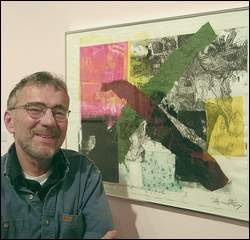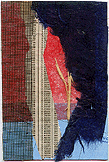 This past Saturday my husband and I participated in a Walk to Defeat ALS at a local park here in Central Florida. The weather was perfect and more than 400 people came together to raise money and awareness for this horrid neuro-muscular disease that continues unabated. No treatment or cure. But it does have a nickname: Lou Gehrig's Disease.
This past Saturday my husband and I participated in a Walk to Defeat ALS at a local park here in Central Florida. The weather was perfect and more than 400 people came together to raise money and awareness for this horrid neuro-muscular disease that continues unabated. No treatment or cure. But it does have a nickname: Lou Gehrig's Disease.A rainbow of t-shirts glowed in the Florida sun and shouted their message to anyone who looked. Most had a prominent photo of a loved one who had died from ALS or was dying. There is no recovery from this disease. Usually people die within six years of diagnosis.
I walked and pushed Derrol in his wheelchair around the track. He and I feel lucky. He is my poster-child for ALS and he is alive and kicking and fighting for a cure or at least a treatment. Heck, we'd settle for just understanding what causes the disease. So far his face does not reside on any t-shirts.
We saw much love expressed in the t-shirts worn that day by adults, children, even dogs. Messages such as Kevin's Warriors, Adele's Allies, Walter's Warriors, and the poignant "We Walk for Mike."
Most of the people walking on Saturday are gathering money to spend on research. Research that will not help their loved ones. Our situation is a bit different. Not only does Derrol have a rare disease. He has a rare form of it -- the inherited form: Familial Amyotrophic Lateral Sclerosis. That means that our children have a 50-50 chance of inheriting it. Derrol watched his brother stumble, wear braces and die all by the age of 18. More than a dozen other members of the extended family have died of ALS and many more wonder if they will be next. So when we walked around that track the steps were made for brothers, sisters, aunts, uncles, cousins, nieces and nephews as well as for our sons and grandchild.
I will never forget those t-shirts. The art on them tells a bittersweet story of someone loved, but also of someone taken before their time.
One of Kevin's Warriors was his son. He and I and a few others were discussing the research we had heard about -- stem cell studies, new medicines combined to stop the progression look promising. And then I saw the young man's face. He wanted to be positive and supportive and cheer on the researcher's, but the truth was obvious. No matter if the funds raised Saturday brought a cure next week -- Kevin's father would still have spent the last five years of his life struggling against a disease that robbed him of everything except his comprehension of what was happening to him. And then it took his life.
These walks are held in every state. If anyone wants to participate in such a fundraiser -- check the ALS Association website for a chapter near you. Design your own t-shirts. Let your art speak for those who have been silenced like Adele, Kevin, Walter, Derrol's brother Tommy.
Of course t-shirt art isn't confined to ALS -- this kind of art, sadly, reflects almost every disease on the planet. ALS is just the disease that is closest to my heart because it has attacked the man I love. I write about our relationship and hardship in Notre Dame Magazine: Faithfully Departing.
I have met such lovely, warm-hearted, talented fabric artists in the years that I have been writing about quilts and quilters. I've thought of trying to find a way to raise funds to fight this disease within the quilt world. But I'm not much at organizing things, only writing about them. If anyone has suggestions on how to start such a project, or anyone interested in being involved, please let me know. I wonder if there is room in the quilting community for one more worthwhile fundraising cause.



